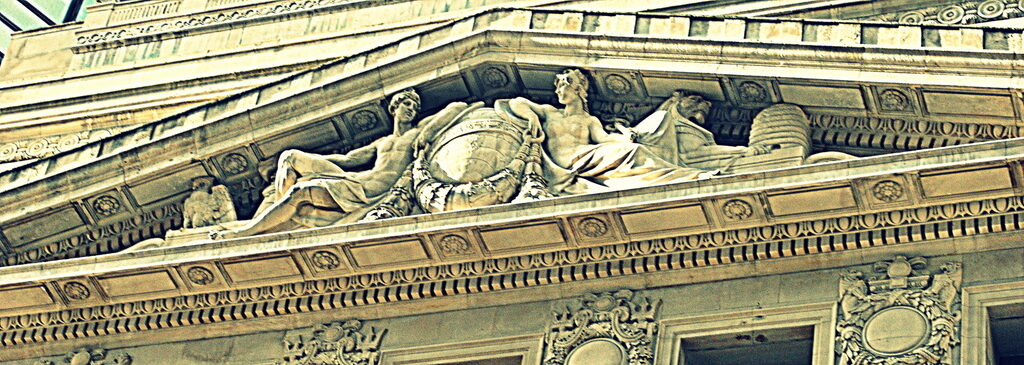Explore the fascinating history and sumptuous architectural detail of the City of London’s classical heritage.

This website seeks to document and illustrate the broad spectrum of Classical buildings that grace a culturally and economically unique urban area: the City of London. The stylistic focus on Classicism arises from local conditions. The City’s architectural whole is greatly enhanced by the tens upon tens of classical 19th and early 20th century edifices that normally do not feature in monographs and barely figure in surveys of architectural history. They account for a substantial portion of the City’s streetscape and it could be said that they constitute a sort of vernacular architecture of finance and commerce.
In this work, we do not enter the debate about the definition of ‘Classical’ or the distinction between authenticity and revivalism in architecture. However, given the enthusiastic 19th century dalliance with eclecticism, there is a risk of casting too wide a net over nearly all pre-war City buildings. We have therefore stuck to a definition of classicism derived from James Stevens Curl and Geoffrey Scott:
- architectural arrangement that shows a Classical underlying composition (axial symmetry, hierarchy of elements, relief of mass through ornament, regular proportion and scale);
- decorative and architectural details clearly derived from the Greco-Roman antique ‘orders’ and the framing of voids and borders via classically-profiled mouldings and devices.
That is a liberal definition, covering anything from the most academically restrained Greek revival to the most profuse Baroque. Nonetheless, the buildings documented here are unified not only geographically and culturally but also by the use of a common ‘vocabulary’ — the Classical architectural language that has influenced Western architectural discourse for the better part of two and a half millennia.
We have specifically excluded from this site the many fine Baroque churches that adorn the City. Their architecture and history is already well documented in recent bibliography. For the same reason, we have also excluded the Bank of England, but we will post on such landmarks as the Mansion House, Royal Exchange and several of the livery halls.
This web site may contain copyrighted material the use of which has not been specifically authorised by the copyright owner. This site operates under the assumption that this not-for-profit use on the web constitutes a “fair use” of the copyrighted material as provided for in Title 17, Chapter 1 , section 107 of the U.S. Copyright Law. If you wish to use this copyrighted material for purposes of your own that go beyond such “fair use,” you must first obtain permission from the original copyright owner. Please contact us if you have any questions or concerns.